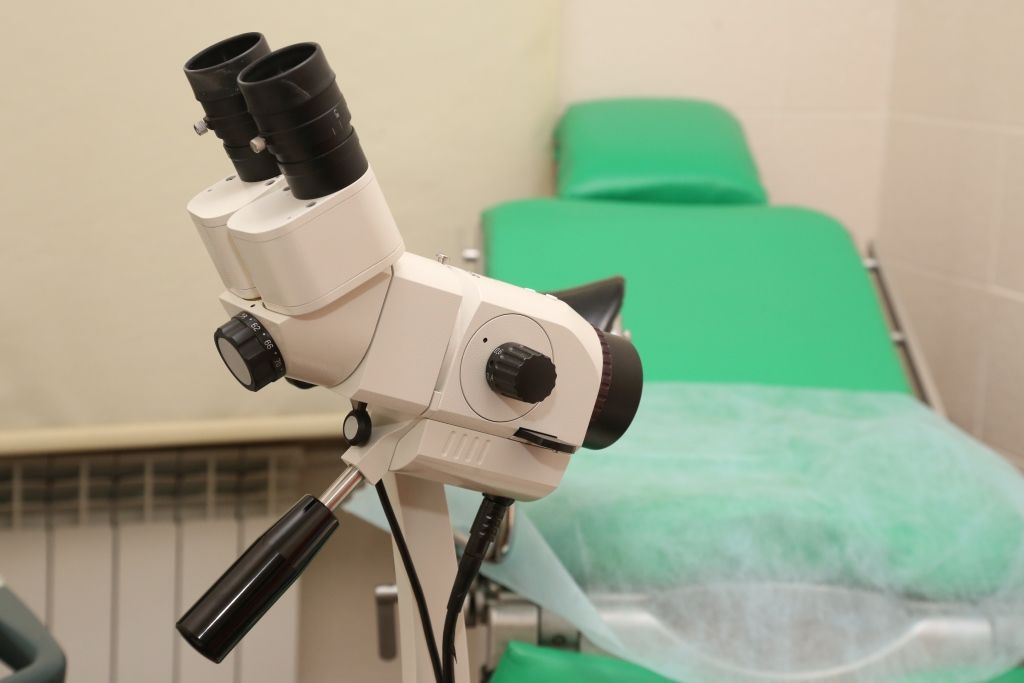Colposcopy has become an essential diagnostic tool in effective cervical cancer screening programs around the world. Let us understand in detail about this important medical procedure and its role in women’s healthcare.
What is Colposcopy?
During a colposcopy, a colposcope, which is an instrument similar to a magnifying glass, allows a specially trained doctor called a colposcopist to look closely at the tissues of the cervix. The colposcope magnifies the cervical tissue between 3-40 times its normal size for a closer visual examination. This helps the doctor detect any abnormal areas of the cervix such as signs of precancer or cancer that may not be visible to the naked eye.
How does a Colposcopy work?
The colposcopy procedure begins by cleaning and examining the cervix and vagina with the help of a speculum, as is done during a routine Pap smear. Once the speculum is in place, the colposcope is used to visually inspect the cervix. For better visualization, dilute vinegar or acetic acid is applied to the cervix. Abnormal areas that are precancerous or cancerous turn white when exposed to the acetic acid solution, whereas normal tissue remains unchanged. The colposcopist carefully examines the visual changes and evaluates the surface vessels, color and texture of the cervical tissues. Biopsies may be taken from any abnormal areas found during the colposcopy for further histological examination under the microscope.
Role in Cervical Cancer Screening
An important part of women’s healthcare
Screening for cervical cancer plays a pivotal role in the early detection and prevention of this disease. The Pap smear or Pap test is routinely recommended for women to detect any pre-cancerous or cancerous cells on the cervix. However, not all abnormal Pap test results necessarily indicate the presence of cancer or precancer.
That is where colposcopy comes in. When an abnormal Pap test result is reported, a colposcopy exam helps the doctor further evaluate the cervix to determine the appropriate management and next steps. The magnification and visualization abilities of the colposcope allow detection of small precancerous lesions (CIN- Cervical Intraepithelial Neoplasia) that may not be picked up on a regular Pap smear. Early diagnosis and treatment for precancers greatly reduces the risk of progression to invasive cervical cancer. Colposcope therefore acts as a crucial follow up tool after an abnormal Pap test result to guide further investigation and intervention if required.
Advantages of Colposcopy
Why it is useful
There are multiple ways in which colposcopy adds value to cervical cancer screening programs:
– Higher resolution and magnification ability compared to just a speculum exam makes identification of abnormalities much more accurate.
– Application of acetic acid facilitates detection of areas that may harbor precancerous changes but are not visible to the naked eye.
– Biopsies can be selectively taken from suspicious areas revealed on colposcopy for definite diagnosis rather than taking random biopsies without visualization. This leads to fewer unnecessary biopsies.
– Helps differentiate between low grade and high grade lesions. The management plan varies accordingly.
– Provides a map of the suspicious lesions that can guide subsequent treatment procedures like cryotherapy, laser ablation or LEEP for precancers.
– Allows monitoring of the treatment area post procedures to check for complete eradication of lesions.
– Detects recurrence of lesions if follow up colposcopies are done at specified intervals as advised.
– Serves as valuable documentation for long term surveillance of changes in the cervix over time.
Limitations of Colposcopy
Some disadvantages
While colposcopy is a very useful diagnostic tool, it does have some limitations:
– It is an invasive procedure requiring a speculum exam which can cause discomfort. Local anesthesia is usually not required but some cramping is common.
– The success depends on the skill and experience of the colposcopist. Interpretation requires special training which not all healthcare providers receive.
– It still does not replace histo-pathological evaluation of biopsy samples in making a definitive pre-cancer or cancer diagnosis.
– Cannot visualize the entire transformation zone of the cervix especially in post-menopausal women.
– Inflammation, infections, hemorrhages, changes due to procedures like LEEP can sometimes obscure visualization and interpretation of findings.
– Expensive equipment requires regular maintenance and calibration. May not be universally available, especially in low resource settings.
– If performed too early in the transformation of precancerous lesions, findings on colposcopy can be subtle. Multiple follow up exams may be needed.
The Future of Colposcopy
Evolving techniques
Research continues towards expanding the capabilities of colposcopy and making the procedure more user-friendly. Some newer techniques include:
– Spectroscopy – Using light from different wavelengths to analyze tissue properties at a molecular level and enhance sensitivity for detection.
– High resolution/digital colposcopy – Better quality images with 3D capabilities can provide stereoscopic views of lesions. May eliminate ambiguity in decision making.
– Computer-assisted analysis – Machine learning algorithms are being studied to quantify features on colposcopy for more objective risk assessment.
– Optical biopsy – Combining real time spectroscopy with colposcopy to non-invasively characterize tissue composition at a microscopic level, eliminating the need for biopsies in some cases.
– Mobile colposcopy – Portable colposcopes and linked techniques aim to decentralize screening and make it accessible even at primary healthcare levels especially in developing nations.
To summarize, colposcopy is a valuable adjunct investigation that acts as the link between abnormal Pap test results and definitive management. It facilitates targeted diagnostic biopsies, guides treatment decisions and aids long term follow up of cervical changes. Though not freestanding, colposcopy plays a pivotal role in organized cervical cancer prevention programs globally. With ongoing innovations, its accuracy, availability and utility are poised to increase manifold in the forthcoming years.
Note:
1. Source: Coherent Market Insights, Public sources, Desk research
2. We have leveraged AI tools to mine information and compile it


